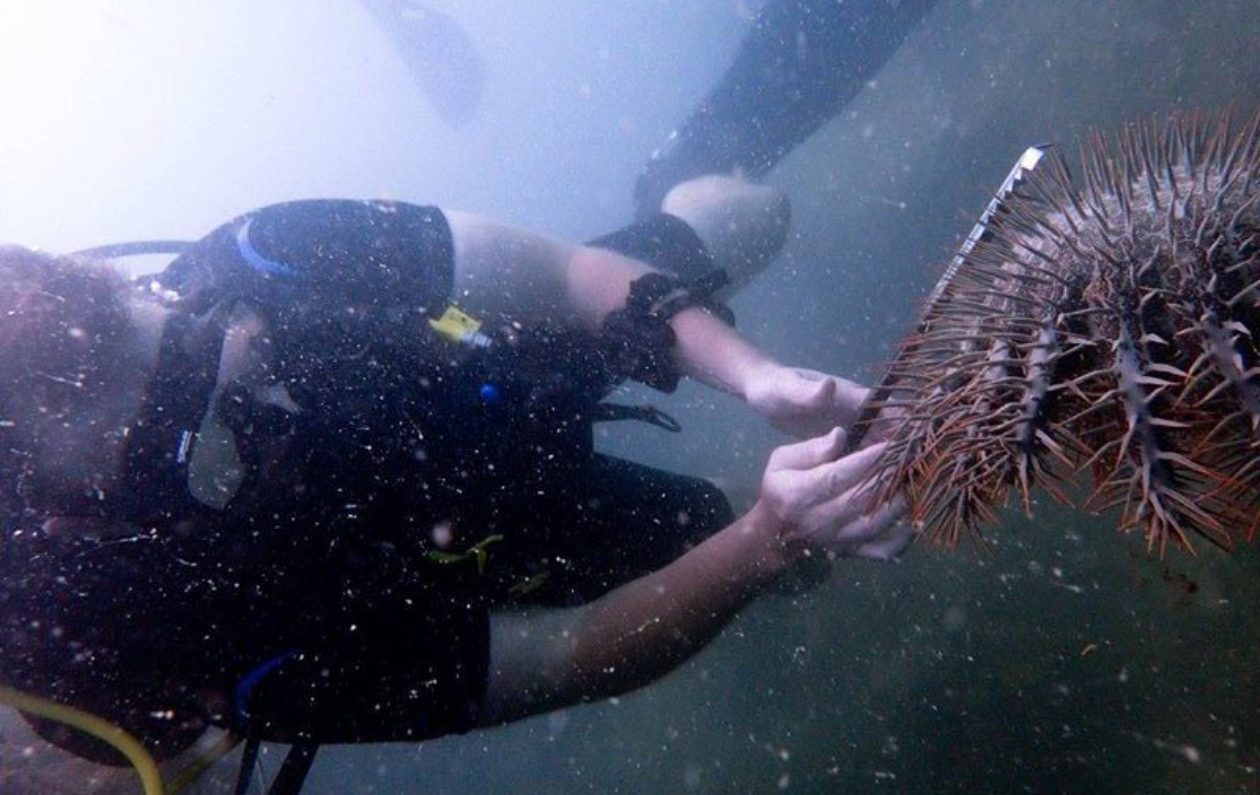Kristen here:
Today we went out to repair the mooring lines on one of the bays and then continued on to remove more crown of thorns from the next bay over.
Mooring lines are increasingly important in the protection of the coral reef ecosystems. By providing a safe and reliable place for boats to attach, it decreases the amount of damage to the reefs by decreasing the need to drop anchors. However, boat captains either through arrogance or ignorance sometimes attach to lines that are used as a ‘no go’ zones, distinguished by the use of small yellow floats on the line. These zones are laid out along shallow reefs as a warning to all that there are shallow reefs which can be damaged by traffic. The rope, which is only an inch thick and attached to small coral head are easily destroyed when a large boat moors to the line. The mass of the boat in the currents and waves breaks the ropes and they float away or sink to the bottom to get tangled up.
The amazing part of this work is the incredible amount of team work that must go into these ventures. To create one line today took a team of about 15 and roughly two and a half hours of work. This time would have been cut a little shorter if there was more experience amongst the team, but as volunteers, we can’t develop the experience quickly. This is why the team leaders usually step in and the rest of us generally take orders and accomplish tasks as they are delegated. Aaron snorkeled and free dove today in order to assist with the laying of the “no go” markers, all the while ducking as boats cruised in and out of the area dropping off tourist who would snorkel. These boats tried to cross the rope many times, each time to be yelled at and move back, like sulking children. One yacht in particular in stereotypical snob fashion cruised through our team in order to get near the reefs so that they would not have to swim further than 15 meters in order to enjoy their snorkeling. However, from the looks of the gentleman, it would have been better for him to have gone a mile off the shore and swam in for the exercise, but I would be scared of the damage he would cause as his body lumbering across the sea floor like a hippo.
While this line was being laid out, a few other divers and I descended to find the attachment points for the line above. After finding it, we quickly surmised that it was in disrepair. Another attachment point was located and used instead. While the rest of the team worked with the better point, I stayed behind and removed the poorer rope so that it would not strangle the coral head there or continue to abrade the surfaces of the rocks. Little blue and yellow fish gathered around me watching the rope unfurl and then darted away when the rope suddenly popped to the surface with the makeshift lift bag I had used to keep one end of the rope pointing up while I worked the knot undone.
Once this was all completed, we all clambered back aboard and traveled to the neighboring bay, and jumped back into the water for a crown of thorns removal. All together, we gathered 20 and disposed of them beneath a mangrove when we returned. Visibility on this dive wasn’t amazing but we managed to stay together, usually so closely that we were bumping in to each other. The complexity of the reef structure on this dive in particular has been fascinating. Most of what we have seen has been fairly flat, laid out on a plain. Here the corals grew over large boulders that were exposed from thousands of years of degradation and erosion caused by the waves battering against the sides of the cliffs. Diving here required us to ‘climb’ over the surfaces, fall down the other sides of the boulders, and hug the walls of the cliffs in the search for the predatory starfish. I think it has been my favorite dive by far.
